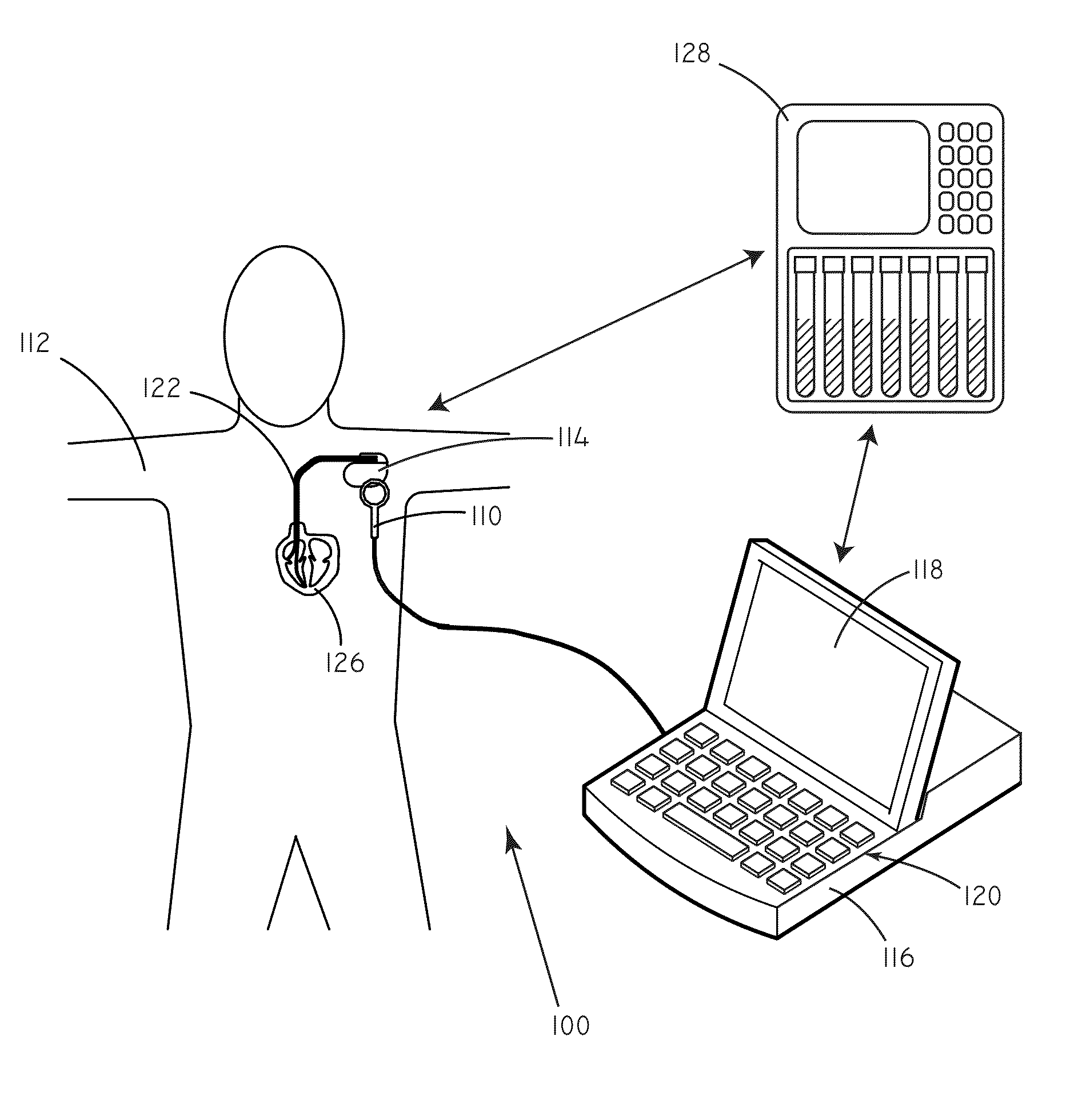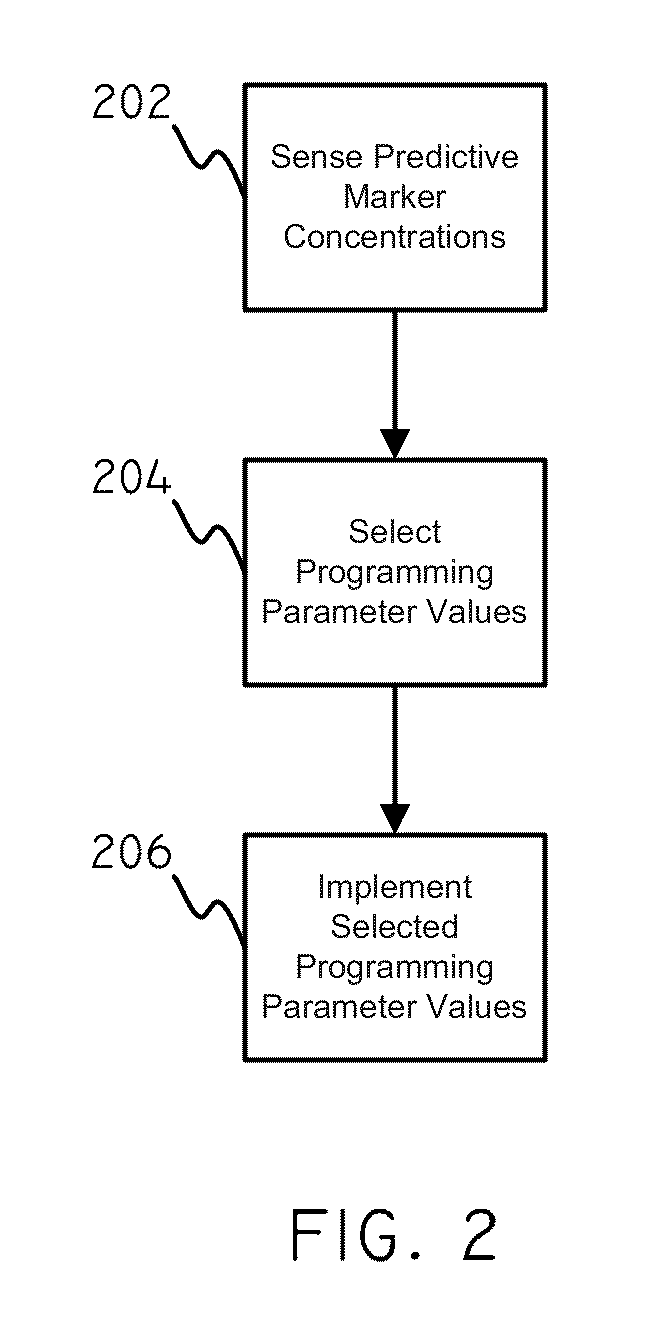Systems and methods for setting parameters of implantable medical devices using predictive marker data
a predictive marker and medical device technology, applied in the field of implantable medical devices, can solve the problems of depleting battery life, device may deliver shock to a patient, patient distress,
- Summary
- Abstract
- Description
- Claims
- Application Information
AI Technical Summary
Benefits of technology
Problems solved by technology
Method used
Image
Examples
Embodiment Construction
[0019]Many implantable medical devices are capable of being programmed in order to control the way in which they provide therapy to a given patient. Programming generally occurs through the process of setting parameter values that influence the functioning of the device. At a basic level, parameters can include such things as pacing amplitude, pacing rate, and pulse width. At a higher level, parameters can also control device operation by affecting the detection of arrhythmias, the therapeutic response to arrhythmias, and the like. Frequently, values for parameters are set by a clinician.
[0020]As described above, unnecessary shocks can cause patient distress and can deplete battery life of an implanted device.
[0021]In accordance with embodiments herein, concentration data regarding predictive markers can be used in order to set values for various programming parameters. Concentration data regarding predictive markers can be used to gauge the risk that a patient will undergo an adver...
PUM
 Login to View More
Login to View More Abstract
Description
Claims
Application Information
 Login to View More
Login to View More - R&D
- Intellectual Property
- Life Sciences
- Materials
- Tech Scout
- Unparalleled Data Quality
- Higher Quality Content
- 60% Fewer Hallucinations
Browse by: Latest US Patents, China's latest patents, Technical Efficacy Thesaurus, Application Domain, Technology Topic, Popular Technical Reports.
© 2025 PatSnap. All rights reserved.Legal|Privacy policy|Modern Slavery Act Transparency Statement|Sitemap|About US| Contact US: help@patsnap.com



